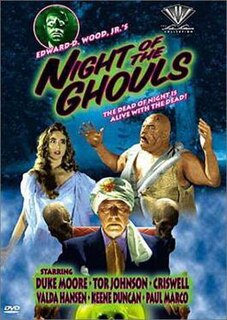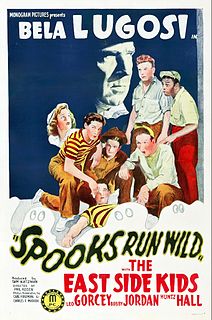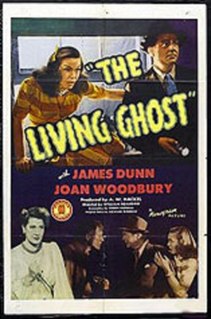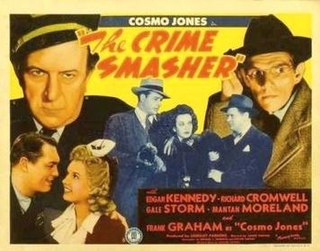
John Herbert Gleason was an American actor, comedian, writer, composer, and conductor known affectionately as "The Great One." Developing a style and characters from growing up in Brooklyn, New York, he was known for his brash visual and verbal comedy, exemplified by his city-bus-driver Ralph Kramden character in the television series The Honeymooners. He also developed The Jackie Gleason Show, which maintained high ratings from the mid-1950s through 1970. After originating in New York City, filming moved to Miami Beach, Florida, in 1964 after Gleason took up permanent residence there.

Arthur William Matthew Carney was an American actor and comedian. A recipient of an Academy Award, a Golden Globe Award, and six Primetime Emmy Awards, Carney was best known for his role as Ed Norton on the sitcom The Honeymooners (1955–1956).
1913 was a particularly fruitful year for film as an art form, and is often cited one of the years in the decade which contributed to the medium the most, along with 1917. The year was one where filmmakers of several countries made great artistic advancements, producing notable pioneering masterpieces such as The Student of Prague, Suspense, Atlantis, Raja Harischandra, Juve contre Fantomas, Quo Vadis?, Ingeborg Holm, The Mothering Heart, Ma l’amor mio non muore!, L’enfant de Paris and Twilight of a Woman's Soul.

Moritz "Morey" Amsterdam was an American actor, comedian, writer and producer. He played Buddy Sorrell on CBS's The Dick Van Dyke Show from 1961 to 1966.

Night of the Ghouls is a horror film written and directed by Ed Wood. The film was shot between April and May 1958. According to actors Paul Marco and Valda Hansen, the film had a local preview in March 1959 at the Vista Theatre in Hollywood where it played on a double bill with the 1959 Lana Turner movie Imitation of Life. It was never sold to television, and was thought for years to be a lost film. It was only released directly to video as Night of the Ghouls by Wade Williams in 1984.

Gary Lockwood is an American actor. Lockwood is best known for his roles as astronaut Frank Poole in the film 2001: A Space Odyssey (1968), and as Lieutenant Commander Gary Mitchell in the Star Trek second pilot episode "Where No Man Has Gone Before" (1966). He starred in the only American film by French New Wave director Jacques Demy, Model Shop. He played numerous guest television roles from the early 1960s into the mid 1990s, and played the title role in The Lieutenant (1963–1964).

Florence Davenport Rice was an American film actress.

Dwight Iliff Frye was an American character actor of stage and screen. He is best known for his portrayals of neurotic, murderous villains in several classic Universal horror films, such as Renfield in Dracula (1931) and Fritz in Frankenstein (1931).

Victor Webster is a Canadian actor. He is known for being the second actor to play Nicholas Alamain on the NBC daytime soap Days of Our Lives from 1999 to 2000, and for his roles as the mutant Brennan Mulwray in Mutant X, Coop the cupid on Charmed and detective Carlos Fonnegra in Continuum.

Rod Cameron was a Canadian-born film and television actor whose career extended from the 1930s to the 1970s. He appeared in horror, war, action and science fiction movies, but is best remembered for his many westerns.

Spooks Run Wild is a 1941 American horror comedy film and the seventh film in the East Side Kids series. It stars Bela Lugosi with Leo Gorcey, Bobby Jordan and Huntz Hall. It is directed by Phil Rosen, in his first and only outing in the series, and produced by Sam Katzman. The original script is by Carl Foreman and Charles R. Marion.

Ralph Dunn was an American film, television, and stage actor.

Ghosts on the Loose is a 1943 American film and the fourteenth film in the East Side Kids series, directed by William Beaudine. The picture co-stars horror film icon Bela Lugosi as well as Ava Gardner in one of her earliest roles.

The Living Ghost is a 1942 American mystery-drama film directed by William Beaudine and produced by Monogram Pictures. Starring James Dunn and Joan Woodbury, the film incorporates elements of the horror genre as it follows an ex-private detective who is called in to investigate why a banker has turned into a zombie. As the detective shares wisecracks with the banker's cheeky secretary, the two fall in love. The film was distributed in the United Kingdom under the title Lend Me Your Ear, and later released on home video as A Walking Nightmare.
The Return of the Rat is a 1929 British silent drama film directed by Graham Cutts and starring Ivor Novello, Isabel Jeans and Mabel Poulton. It was made by Gainsborough Pictures at their Islington Studios. It was also released with a music-and-effects soundtrack for cinemas wired for sound.

Martin Miller, born Johann Rudolph Müller was a Czech-Austrian character actor who played many small roles in British films and television series from the early 1940s until his death. He was best known for playing eccentric doctors, scientists and professors, although he played a wide range of small, obscure roles—including photographers, waiters, a pet store dealer, rabbis, a Dutch sailor and a Swiss tailor. On stage he was noted in particular for his parodies of Adolf Hitler and roles as Dr. Einstein in Arsenic and Old Lace and Mr. Paravicini in The Mousetrap.

The Crime Smasher is a 1943 American crime comedy film directed by James Tinling and starring Edgar Kennedy, Richard Cromwell and Gale Storm. It is based on the Radio program Cosmo Jones featuring Frank Graham. The film's sets were designed by the art director Dave Milton. It is sometimes alternatively titled Cosmo Jones in the Crime Smasher.

Khamoshh... Khauff Ki Raat is a 2005 Indian Hindi mystery thriller directed and produced by Deepak Tijori. It was a remake of James Mangold's 2003 Hollywood psychological thriller Identity. The film received poor reviews from critics.
Tip, Tap, and Toe were a seminal African-American tap-dance comedy act that began in the late 1920s and appeared in several motion pictures in the 1930s and '40s. Its original members were Sammy Green, Teddy Frazier, and Raymond Winfield. At times it included Freddie James and Prince Spencer, also a member of The Four Step Brothers. They worked for Eddie Cantor at Palace Theatre in New York and performed on their own at the Paramount Theatre, and were in George White's Scandals of 1936 and the Cotton Club Review. African-Americans were not allowed to star in major motion pictures in the 1930s and '40s, but specially acts, such as Tip, Tap, and Toe, were permitted, and the group appeared in all least five major Hollywood films during that time.

Hubie Halloween is a 2020 American mystery comedy film directed by Steven Brill, written by Adam Sandler and Tim Herlihy, and starring an ensemble cast consisting of Sandler in the title role, Kevin James, Julie Bowen, Ray Liotta, Rob Schneider, June Squibb, Kenan Thompson, Shaquille O'Neal, Steve Buscemi, and Maya Rudolph. The film follows a Halloween-loving delicatessen worker who must save the town of Salem, Massachusetts, from a kidnapper.


















